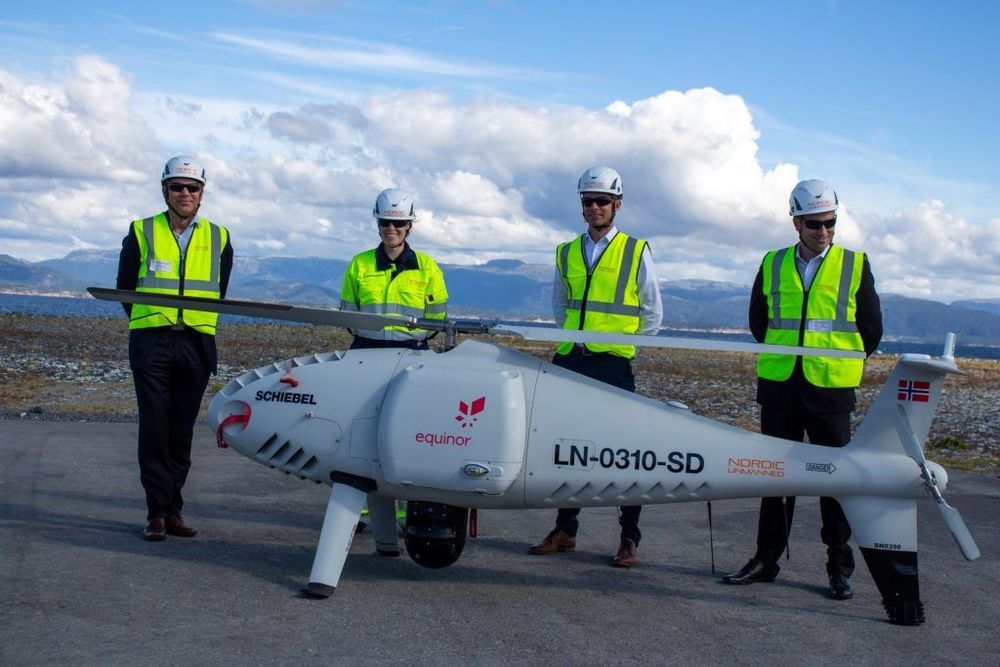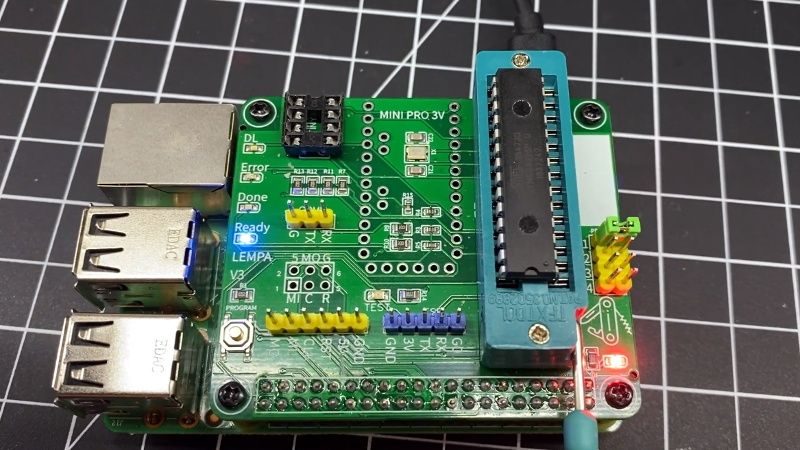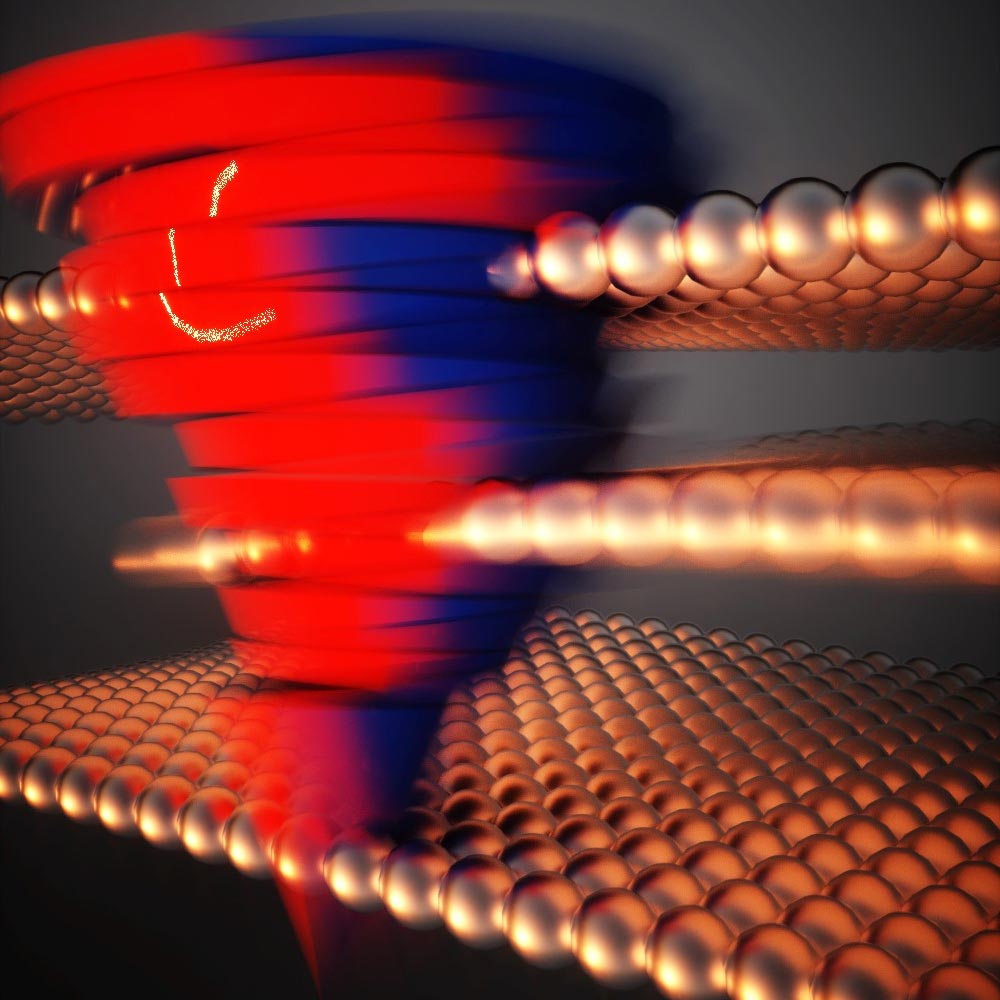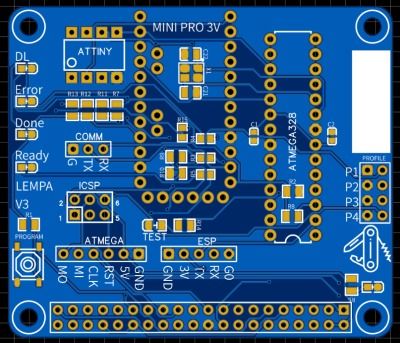The quadrupedal robots secured the perimeter of a base during a recent test of the USAF’s Advanced Battle Management System.
Category: robotics/AI – Page 2,070

Brain-Inspired Electronic System Could Make Artificial Intelligence 1,000 Times More Energy Efficient
Extremely energy-efficient artificial intelligence is now closer to reality after a study by UCL researchers found a way to improve the accuracy of a brain-inspired computing system.
The system, which uses memristors to create artificial neural networks, is at least 1,000 times more energy efficient than conventional transistor-based AI hardware, but has until now been more prone to error.
Existing AI is extremely energy-intensive — training one AI model can generate 284 tonnes of carbon dioxide, equivalent to the lifetime emissions of five cars. Replacing the transistors that make up all digital devices with memristors, a novel electronic device first built in 2008, could reduce this to a fraction of a tonne of carbon dioxide — equivalent to emissions generated in an afternoon’s drive.

Drone Carries Freight To Offshore Oil Platform
A Camcopter S-100 drone made the first commercial drone delivery to an offshore oil platform in late August and it might be the beginning of a major industry. The helicopter drone flew a 3D printed part from Norway to a rig located about 60 miles off the coast. The flight was conducted without any special airspace adjustments and the drone was just part of the traffic servicing the oil fields. The drone also did an exterior inspection of the drilling platform and performed a simulated search and rescue drill with the rig’s standby vessel.
Of course, the oil companies are keeping a close eye on the drone developments because hauling freight and supplies to the rigs by drone could not only be a lot cheaper, but also safer. There are also several major helicopter companies that have oilfield supply as their core business watching the new initiatives. Servicing oil platforms is a multibillion-dollar business and also one of the most dangerous forms of commercial flying. Nordic Unmanned, which flew the first drone flight, says drones are a viable alternative to many missions now flown by big, expensive helicopters. “This marks the beginning of a new chapter within unmanned logistics,” spokesman Pål Kristensen said.” The technology is proven and robust enough to implement in large scale and reduces the risk cost and environmental footprint drastically.”



Turning The Raspberry Pi Into A MCU Programmer
Once you graduate beyond development boards like the Arduino or Wemos D1, you’ll find yourself in the market for a dedicated programmer. In most cases, your needs can be met with a cheap USB to serial adapter that’s not much bigger than a flash drive. The only downside is that you’ve got to manually wire it up to your microcontroller of choice.
Unless you’re [Roey Benamotz], that is. He’s recently created the LEan Mean Programming mAchine (LEMPA), an add-on board for the Raspberry Pi that includes all the sockets, jumpers, and indicator LEDs you need to successfully flash a whole suite of popular MCUs. What’s more, he’s written a Python tool that handles all the nuances of getting the firmware written out.
After you’ve configured the JSON file with the information about your hardware targets and firmware files, they can easily be called up again by providing a user-defined ID name. This might seem overkill if you’re just burning the occasional hex, but if you’re doing small scale production and need to flash dozens of chips, you’ll quickly appreciate a little automation in your process.

“Berry Curvature” Memory: Quantum Geometry Enables Information Storage in Metal
The emergence of artificial intelligence and machine learning techniques is changing the world dramatically with novel applications such as internet of things, autonomous vehicles, real-time imaging processing and big data analytics in healthcare. In 2020, the global data volume is estimated to reach 44 Zettabytes, and it will continue to grow beyond the current capacity of computing and storage devices. At the same time, the related electricity consumption will increase 15 times by 2030, swallowing 8% of the global energy demand. Therefore, reducing energy consumption and increasing speed of information storage technology is in urgent need.
Berkeley researchers led by HKU President Professor Xiang Zhang when he was in Berkeley, in collaboration with Professor Aaron Lindenberg’s team at Stanford University, invented a new data storage method: They make odd numbered layers slide relative to even-number layers in tungsten ditelluride, which is only 3nm thick. The arrangement of these atomic layers represents 0 and 1 for data storage. These researchers creatively make use of quantum geometry: Berry curvature, to read information out. Therefore, this material platform works ideally for memory, with independent ‘write’ and ‘read’ operation. The energy consumption using this novel data storage method can be over 100 times less than the traditional method.
This work is a conceptual innovation for non-volatile storage types and can potentially bring technological revolution. For the first time, the researchers prove that two-dimensional semi-metals, going beyond traditional silicon material, can be used for information storage and reading. This work was published in the latest issue of the journal Nature Physics[1]. Compared with the existing non-volatile (NVW) memory, this new material platform is expected to increase storage speed by two orders and decrease energy cost by three orders, and it can greatly facilitate the realization of emerging in-memory computing and neural network computing.

This know-it-all AI learns by reading the entire web nonstop
Back in July, OpenAI’s latest language model, GPT-3, dazzled with its ability to churn out paragraphs that look as if they could have been written by a human. People started showing off how GPT-3 could also autocomplete code or fill in blanks in spreadsheets.
In one example, Twitter employee Paul Katsen tweeted “the spreadsheet function to rule them all,” in which GPT-3 fills out columns by itself, pulling in data for US states: the population of Michigan is 10.3 million, Alaska became a state in 1906, and so on.
Except that GPT-3 can be a bit of a bullshitter. The population of Michigan has never been 10.3 million, and Alaska became a state in 1959.


DeepMind’s StarCraft 2 AI is now better than 99.8 percent of all human players
DeepMind today announced a new milestone for its artificial intelligence agents trained to play the Blizzard Entertainment game StarCraft II. The Google-owned AI lab’s more sophisticated software, still called AlphaStar, is now grandmaster level in the real-time strategy game, capable of besting 99.8 percent of all human players in competition. The findings are to be published in a research paper in the scientific journal Nature.
Not only that, but DeepMind says it also evened the playing field when testing the new and improved AlphaStar against human opponents who opted into online competitions this past summer. For one, it trained AlphaStar to use all three of the game’s playable races, adding to the complexity of the game at the upper echelons of pro play. It also limited AlphaStar to only viewing the portion of the map a human would see and restricted the number of mouse clicks it could register to 22 non-duplicated actions every five seconds of play, to align it with standard human movement.
